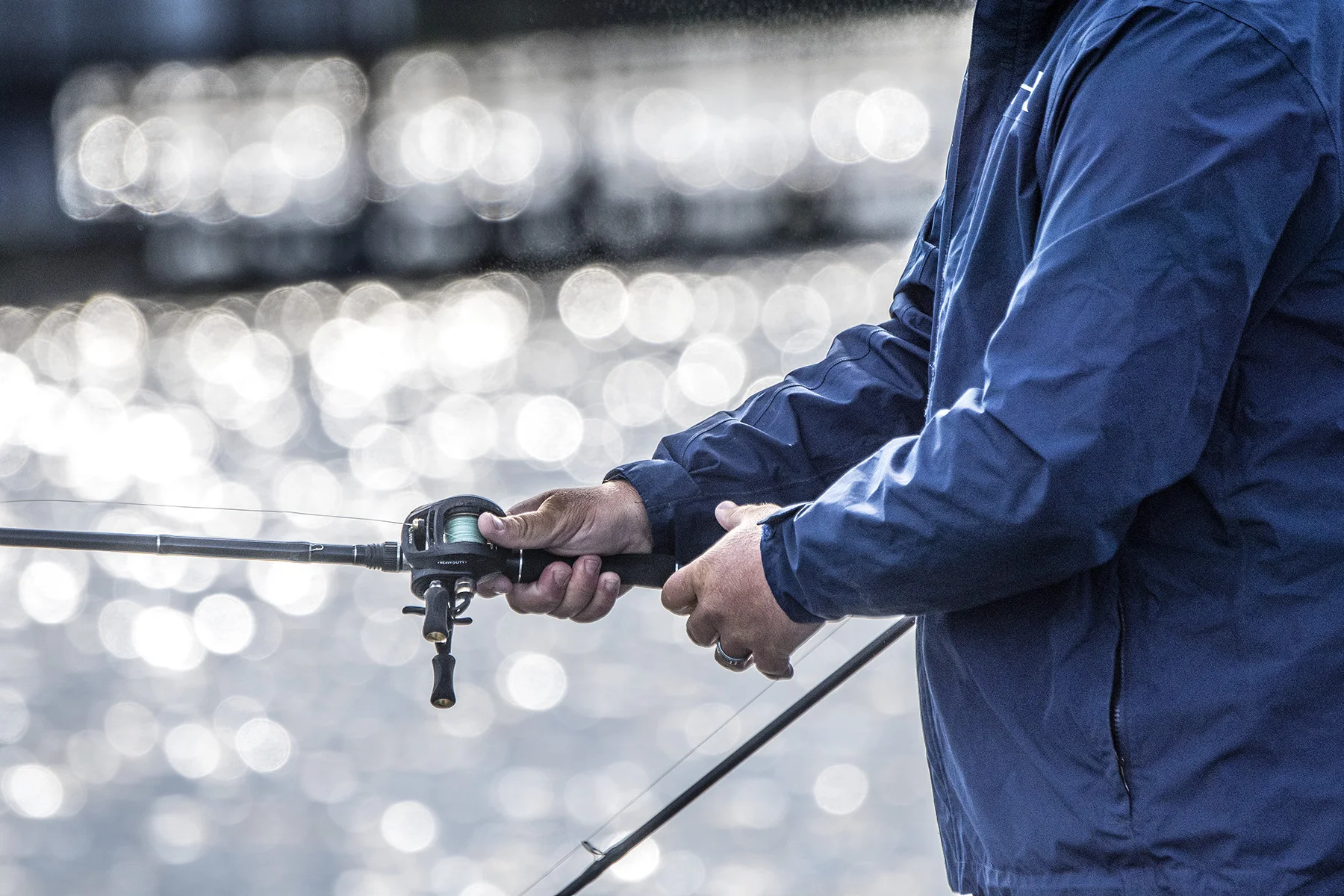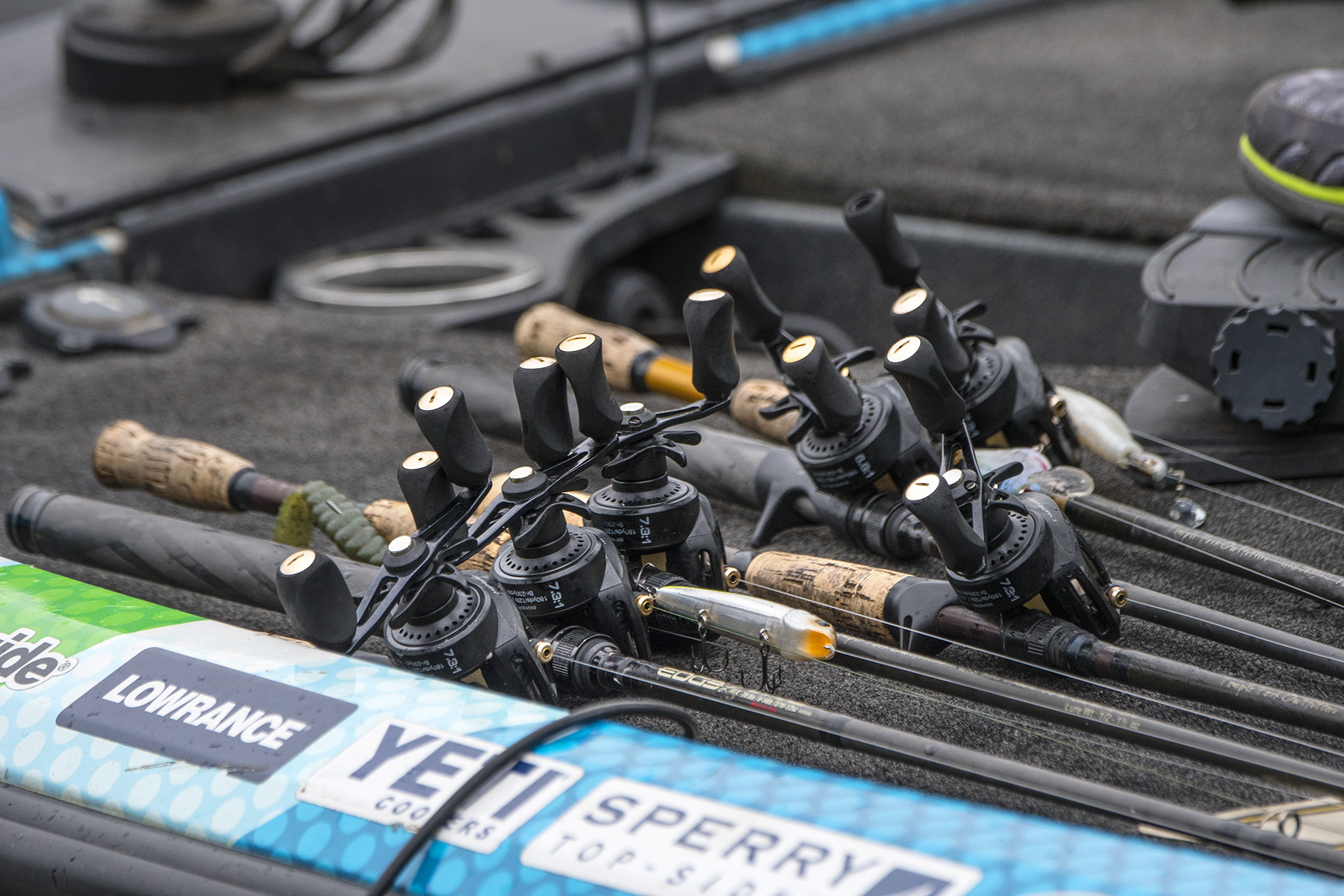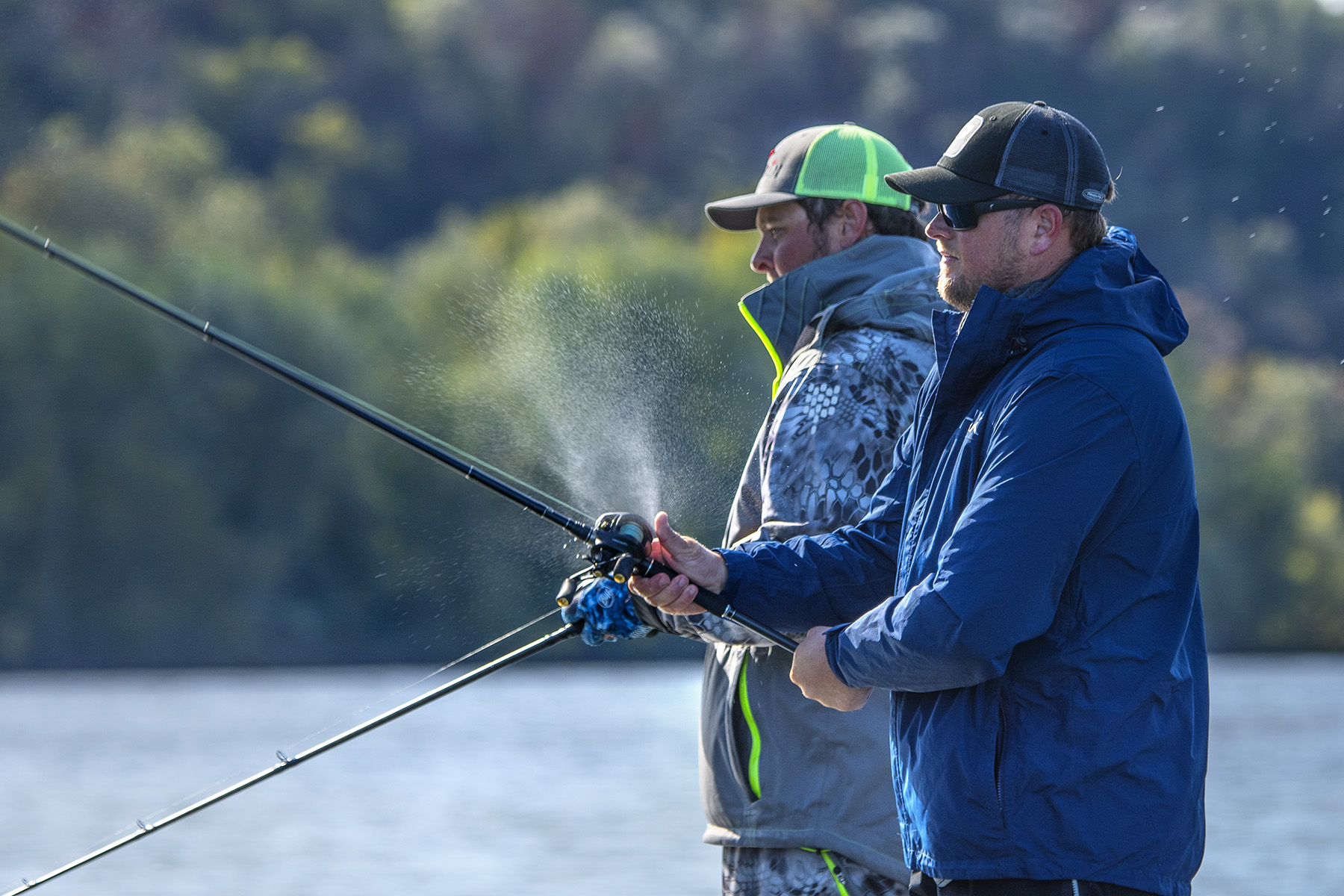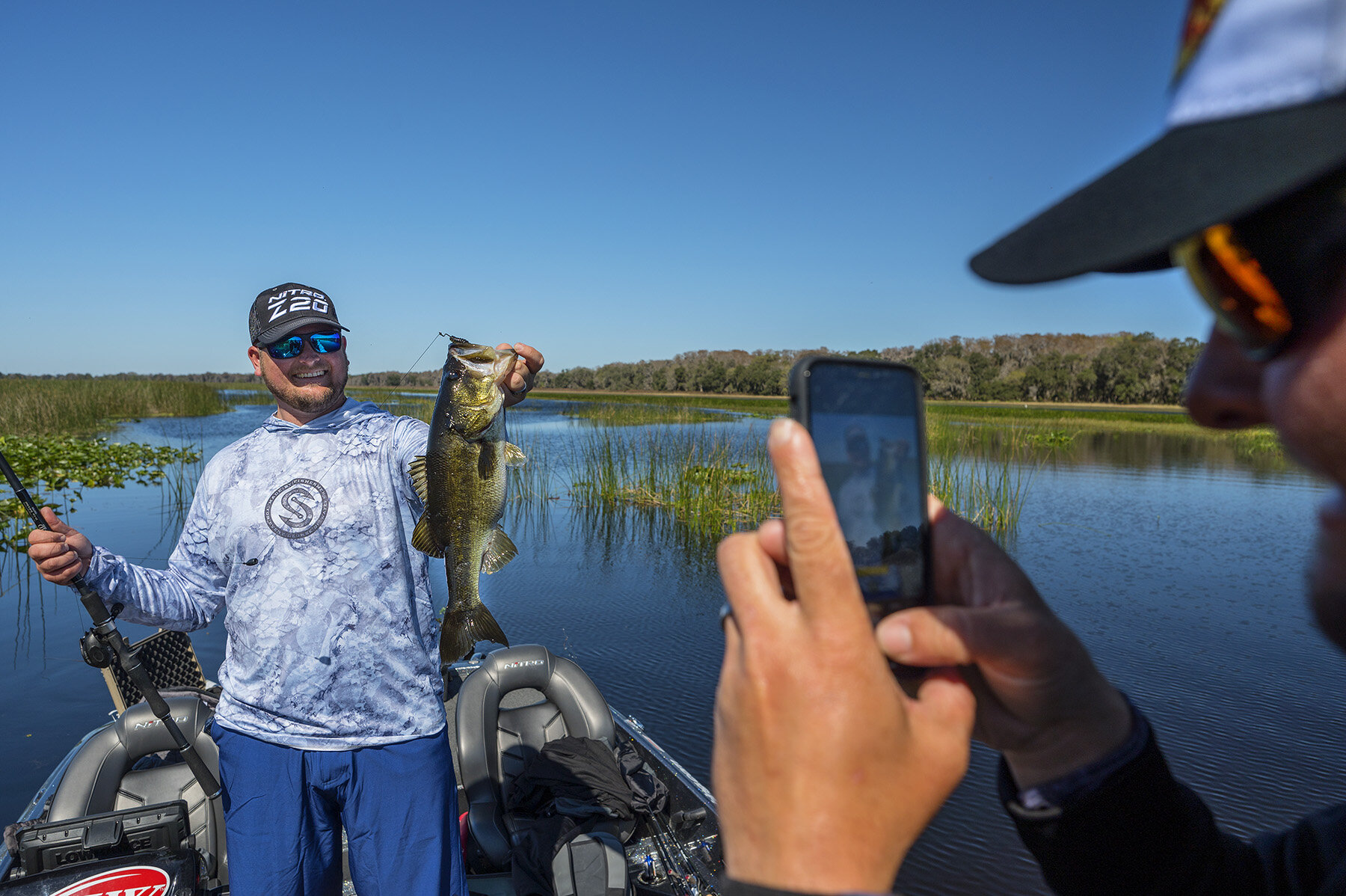Beating The Baitcaster
/Question: What advice can you give a guy starting off with a baitcaster? I have used a spinning reel my whole life, and I am wanting to add a new weapon to my game. What would be some tips of do's and don'ts with this type of reel? -Ryan
Answer:
Great question! This is actually a question that I get asked quite a bit, because it is quite common for most anglers to start out fishing with spinning gear, and then finally graduate into baitcasting gear. Since both types of reels are very different, anglers are required to learn a different skill set for both.
In order to understand what you are up against with a baitcasting reel, let's discuss their design, in order to get a better understanding of how they work.
A Trucker's Guide To Casting
The primary difference between a spinning reel and a baitcasting reel is the fact that while a spinning reel's spool stays stationary during the cast and retrieve (with the exception of when a fish is pulling drag), a baitcaster's spool actually spins to release, and retrieve the line.
Though the design of a baitcaster makes it a more powerful reel that is well suited for heavy cover, and heavy line applications, casting a baitcaster is much more involved, and if the angler doesn't control the spool's rotation correctly a "bird's nest" might form from the spool actually continuing to rotate even after the bait has hit the water.
In an effort to make baitcasting reels more "angler friendly" reels generally feature two spool control mechanisms, the tension knob, and a magnetic or centrifugal braking system. In order for you to get the most out of your baitcasting reel, you need to make sure you know how to make these two systems work in unison.
The tension knob is the dial that is always placed on the same side as the handle, under the star drag, and is in-line with the spool. This knob controls the amount of consistent pressure that is put on the spool at all times. Conversely, the braking system that you have, whether magnetic or centrifugal, are designed to slow the spool at only higher speeds in an effort to slow the spool down towards the end of the cast. Braking systems are usually found on the opposite side of the reel from the handle, on the side plate- usually in the form of a numbered dial. Some brakes are found inside the reel, under the side plate, and may require the user to manually engage or disengage the brakes.
There are many different braking system designs out there, but the tension knob remains pretty much the same throughout. Here you can see the knob in its usual place behind the handle and the star drag.
Think of these two systems as they might relate to the functions of your car- the tension knob would be the different gears in the transmission, and the baking system would be…..well…….the brakes. This may sound a bit misleading and confusing…..but hang with me.
If you are going down a hill in your car, the best thing to do is to put it in a lower gear, right? Putting your car in 3rd, or even 2nd gear, will consistently slow down your car, even if you are not putting your foot on the brake, which helps you control your speed. The tension knob has the same effect- it creates constant pressure on the spool to constantly slow the spool down to a manageable RPM.
As for the braking system, in a car, brakes are only there to quickly slow, or stop, a fast moving vehicle. In a reel, the brakes apply pressure only when the spool reaches it's highest speeds, and then it disengages when they aren't needed.
So, in order to have the safest driving experience when going down a steep and winding road, it is best to use the gears (tension knob) to constantly slow the vehicle to a more consistent speed, while using the brakes (break system) to take care of the excess momentum.
If this didn't make sense as it relates to a baitcasting reel, then at least you know how to properly drive down a steep grade without ruining your brakes. In either case…..let's move on.
Set It And Forget It
Now that we have gone over the spool control devices, let's talk about my recommendations for using them.
First off, I always recommend starting with the tension knob first. I prefer to disengage whatever braking system I have by turning the dial to the lowest setting or the OFF position. At this point, with the reel attached to a rod, and the lure you wish to use tied on, go ahead a start tightening the tension knob. The perfect tension for a beginner is where if you let your lure free-spool the lure will slowly fall by its own weight to the ground, but once it hits the ground the spool immediately stops. If the lure doesn't fall at all, theres too much tension, and if the lure plummets to the ground and the spool spins to create a backlash, then it is too loose.
Once you have found that "happy medium" with the tension knob, go ahead and turn on the braking system. Now how much brake you engage all depends on the situation. If you are looking for a good starting point for learning how to cast, or are faced with windy conditions, I recommend using about half of the braking, while if you are looking for maximum casting distance, I would use no more than 1/4 of the maximum braking. I'm not a big fan of using all of the brakes. I find that half of the braking capability of most reels is sufficient for most conditions. Experimenting with your particular reel is best.
Rule Of Thumb
Now that we have discussed in detail the features that control the spool that are built into the reel, let's discuss the most important spool control device of all- your thumb!
Even with the best braking systems on the market, the angler's thumb is by far the most effective tool for avoiding backlashes. Though learning how to set your reel correctly will make a huge difference in the learning process, it is essential to put focus on learning how to put appropriate pressure on the spool with your thumb.
Before you cast, with your spool release button engaged, you must use firm pressure to keep the line from slipping on the cast, but once you release your thumb, allowing your bait to fly, you must then learn to start lightly "feathering" the spool with your thumb in order to make sure the spool does not spin faster than the line is coming off of it. As the end of the cast comes closer you will need to apply more and more pressure, until finally the bait hits the water and you finally stop the spool completely.
This is a skill that is hard to teach because it is more of an intuitive act, and needs to be learned by feel through a lot of practice.
My suggestion is to practice your spool control skills as much at home, in your yard, or wherever you can. Set up a target somewhere, and continue to cast from different angles, and distances.
Baitcasting reels can be difficult to master, but their benefits make them well worth the effort.
Other Helpful Tips
I think that the type of lure you learn with will make things easier. I recommend learning with either a 3/8oz or 1/2oz jig. Jigs are great because they don't create a lot of drag during a cast, and are easy to maintain contact with throughout the cast.
As far as the type of cast I would suggest learning with, I would say that you could start with the same type of cast you're comfortable with using a spinning reel, but also experiment with an underhand "pitch," an overhead "power" cast as well as a side armed "roll" cast.
The rod that you learn with is also really important. I would suggest getting a 7-foot Medium to Medium Heavy rod with a light tip action, so you can feel the tip load up on the cast. It can be very hard to learn on a rod that is too stiff, and ones that have too slow an action can also be a pain.
If you are a beginner, also think about which side you want the reel handle to be on. Though most people use right-hand retrieve reels, I thought it was kind of silly to do so, since most of us use left handed spinning reels. I ended up abandoning right handed reels and going to left handed models. Without having to change hands for a cast, I feel that I can be more efficient with a left handed reel, but it comes down to what you are comfortable with. That all being said, when buying your first reel, try to save up to buy one that will last a long time.
Finally, I suggest learning with a moderately sized line. If you are using mono or fluorocarbon, I would suggest using 15-pound Vicious XACT Mono or 100% Fluorocarbon. Braid can be a great line to work with because it won't fluff up on the spool like nylon lines will, so try using 30 or 50-pound Vicious Braid if this is the route you will like to take.
Overall, bait casters are a very valuable part of any serious fisherman's arsenal, but with their extra benefits, they also require an extra skill set to use. If you are like me, after using a baitcaster for a little bit, you will learn that the extra effort needed to master them is well worth the time.
Hope this helps!
Happy Fishing!
-Sonar


















